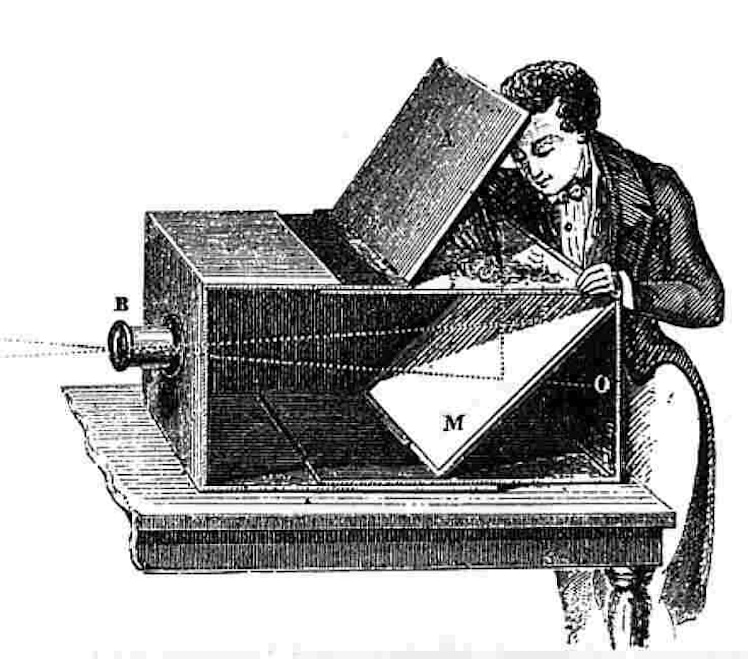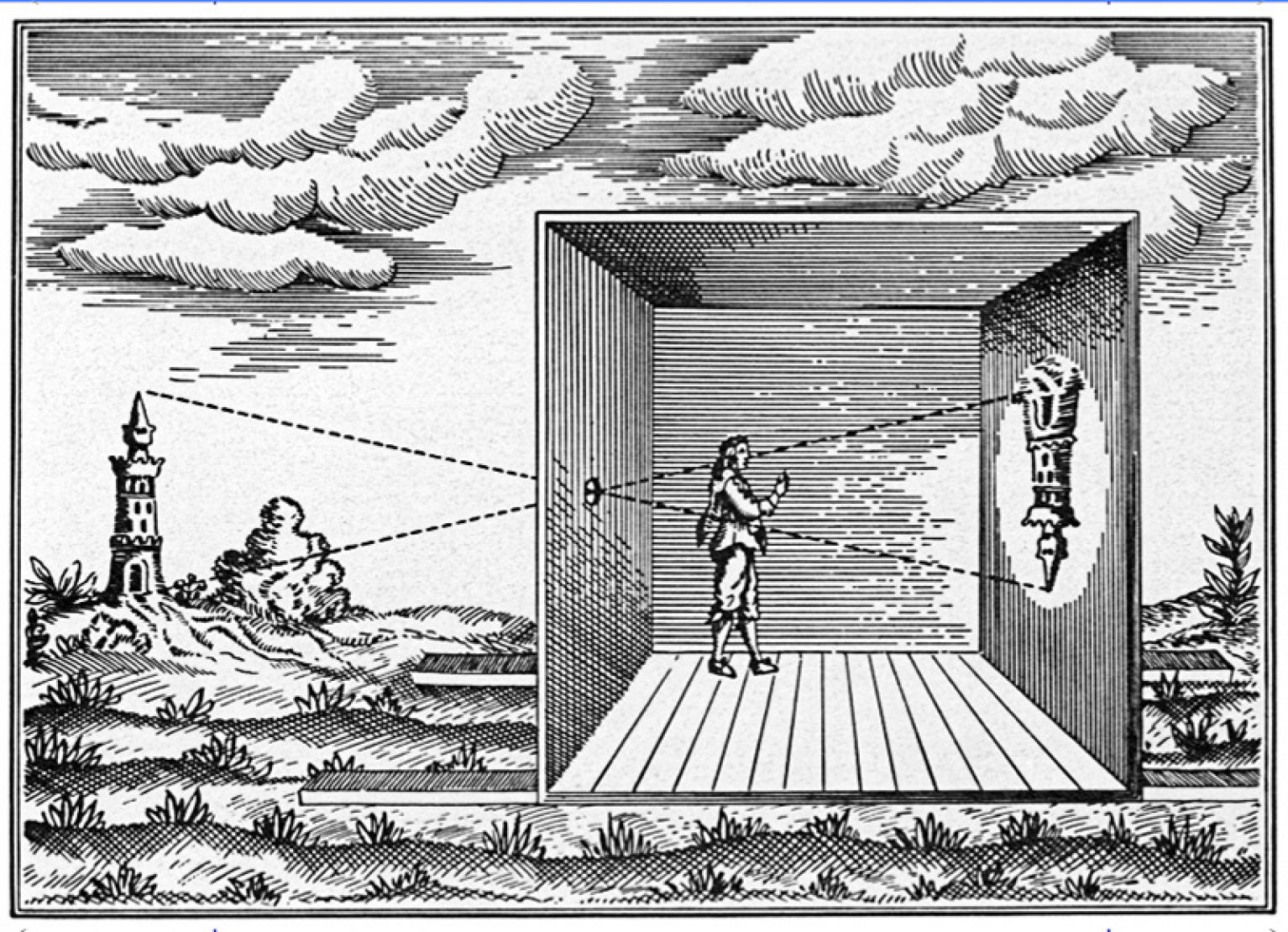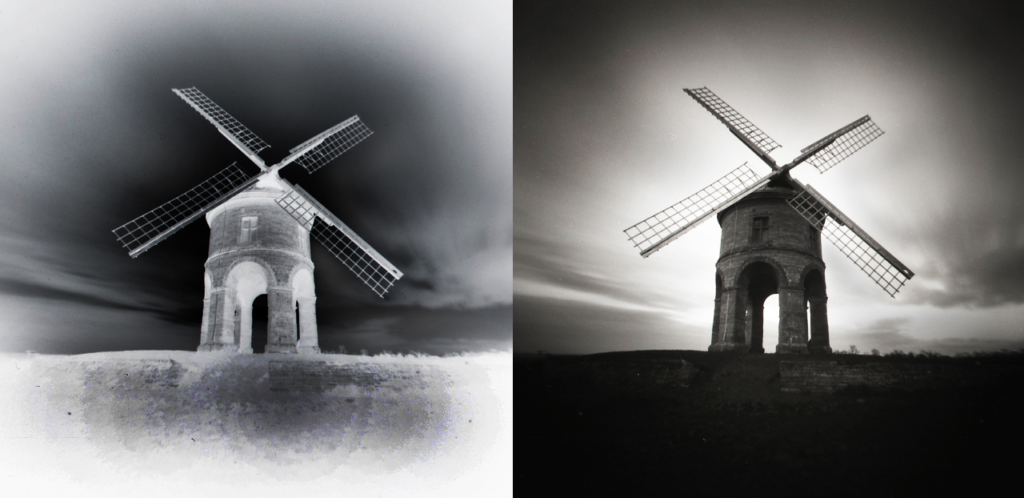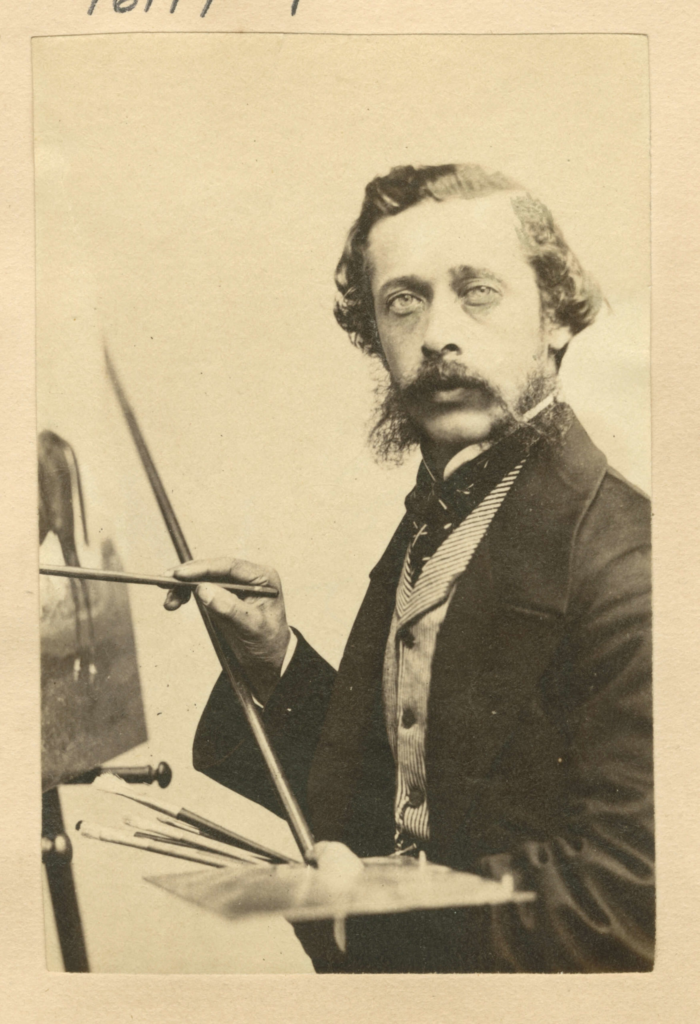photography is where you turn something ordinary into extraordinary and it can also be something like putting a frame into something and capturing that moment. It creates curiosity of who is the people framed in the photo and what lies outside the frame, it can transform what it describes. The camera is objective. Its like a story never ends in a photography because the photo was put into a frame with never ending ellipsis. Many say that photos can intrigue, outrage, disappoint and move people/society.
Fixing the shadows
Supposedly, photography was invited in 1839, however the idea of it has been known way before 1839 and was used for a millennium.
Camera Obscura which is a Latin word for dark shadow is a technique consisted of a dark room with no light emitting in the room. Then a small hole or circle would be made to allow light to enter. After 20 minutes, and upside version of what is outside, emitting from the hole , should be displayed on the other side of the wall. The longer you wait, the more detailed image you will get. This technique was seen as something deep, primitive and natural.
Done like this,


Pinhole photography
Pinhole photography uses the most basic concepts of a camera. A lightproof box, an aperture, and light-sensitive material. Light is passed through the pinhole to project an inverted image onto the paper or film on the opposite end of the camera. The distance between the pinhole and film determines the angle of view.

Joseph Nicéphore Niépce and The Niépce Heliograph
The Niépce Heliograph was originnaly made in 1827, during a period where there was fervent experimentation. It was and still is the earliest photograph produced with the help of the camera obscura known to survive till this day.
The photography shown below was made by Joseph Nicéphore Niépce where he was born in 1765 and died in 1833. He was born in a prominent family in France. Encouraged by the ever growing popular demands for affordable pictures, his photographic experiments were conducted with the dual aims of copying prints and recording scenes from real life camera. He produced legible but fleeting images or points de vue, as he called them, in 1816. Over time, he tried to order chemicals, techniques and materials to advance the process he ultimately called héliographie, or ‘sun writing’.
To make the so called heliograph, he dissolved light-sensitive bitumen oil of lavender and put a thin coating over a polished pewter plate. He then would insert the plate into a camera obscura and put it near a window in his second-story workroom. After several days of exposure to sunlight passed, the plate yielded an impression of the courtyard, outbuildings, and trees outside.

Louis Jacques Mandé Daguerre and Daguerreotype
The daguerreotype is a direct-positive process, creating a highly detailed image on a sheet of copper plated with a thin coat of silver without the use of a negative. The process required great care. The silver-plated copper plate had first to be cleaned and polished until the surface looked like a mirror.
The daguerreotype was the first commercially successful photographic process between 1839 until 1860 stated in the history of photography. It was named after the inventor, Louis Jacques Mandé Daguerre.
In 1829, Louis partnered with Nicéphore Niépce, as mentioned above, the inventor of the first heliograph in 1822. However when Nicéphore Niépce suddenly died in 1833, Daguerre continued experimenting and produced the process which would later be know as Daguerreotype.

Henry Fox Talbot & Calotype
The Calotype was an early photographic technique by William Henry Fox Talbot of Great Britain in the 1830s. This technique consisted of a sheet of paper coated with silver chloride that was exposed to light in a camera obscura. The areas that where hit the most by light became darker which yielded a negative picture. This ever moving aspect of the process lat in Talbot discovery of a chemical called Gallic acid, would be the key to develop the image on the paper.
This acid would accelerate the silver chlorides chemical reaction to the exposed light. This discovery ensured a shorter exposure time in the camera with the drastic change, down from one hours to one minute.
“for when the eye was removed from the prism—in which all looked beautiful—I found that the faithless pencil had only left traces on the paper melancholy to behold.”

Robert Cornelius & self-portraiture
In 1839, late October or some say early November a 30-year-old man nestled alone in the works of his family’s Philadelphia gas lighting business. He noticed that in front of him was a makeshift camera where the cameras lens was fashioned from an opera glass.
He’d realize that the daylight was perfect to expose the meticulous prepared metal plate within the camera and decided to take a photograph of himself. Something that was revolutionary. This meant that he had to remain still and keep his posture for 10 to 15 minutes.
This extraordinary man was named Robert Cornelius, and some might even sometimes joke that he took the world’s first selfie that day. However it was said that he accomplished much more than the term “selfie” implies.

Julia Margeret Cameron & Pictorialism
Julia Margaret Cameron received her first ever camera when she was only 48 ,from her daughter and son in law. Before her time of receiving the camera, Julia had followed albums and experimented with printing photographs from negatives. Once, she printed a negative image by developing with Swedish art photographer called O.G. Rejlander where they surrounded the portrait with ferns to create a photogram frame which is basically a combination of an picture made in a camera and a camera-less technique. This showed Julia’s experimental nature and provided us with a glimpse of her photographic practice before she even acquired a camera of her own.
When Cameron actually took up photography, it involved lots of hard and physical work which used potentially hazardous materials. Her set up was a wooden camera, that sat on a tripod, which was was large and awkward. She used the most common technique at the time, which was the production of albumen prints that came from from wet collodion glass negatives. The process required a glass plate which was approximately 12 x 10 inch, to be coated with photosensitive chemicals, in a darkroom and it had to be exposed in the camera when it was still damp. The glass negative would then be returned to the darkroom, to be developed, washed and varnished. Prints were mostly made by placing the negative straight on to sensitised photographic paper and immediately exposing it to sunlight.
She quickly devoted herself to photography and within a month of her receiving her well deserved camera, she made an extraordinary image which she called her ‘first success’. It was a portrait of Annie Philpot, who was the daughter of a family staying in the Isle of Wight where Cameron lived
“The capacity for delight is the gift of paying attention”

Henry Mullins & Carte-de-Visit
The introduction of the carte de visite has many introductions and beginnings, but all agree that they became popular in the late 1850s. They kept their popularity until the late 1860s and the a sudden decline happened decline however they were still produced in the 1900s. Cartes de visite contains of a print stuck to a card mount of about 4 ⅛” x 2 ½” in size. The prints were mostly albumen and then later were used in emulsion based printing out paper. Other uncommon processes, including carbon and Woodburytype, were also used but not as popular.
He was born in 27th of December 1818 and died in the year of 1880, was a British photographer who started working at 230 Regent Street in London in the 1840s and moved to Jersey in July 1848, where he then set up a studio known as the Royal Saloon, at 7 Royal Square. Initially he was partnered up with a Mr Millward, who we know very little about. By the following year, he started working alone and he continued to work in the same studio for another 26 years.
For a bit of time, He worked in London, but judging by the collection of his images which are now held by La Société Jersiaise, he found himself many of willing sitters in the island prepared to pay half a guinea (promoted as “one half of that in London”) to have their portrait taken by him.
As seen clearly, his speciality was cartes de visite and to which the photographic archive of La Société has a massive collection of these. They can be seen on the on line archive , on the website. They possess about 9600 go his images however the majority of these are set were up to 16 photographs taken in one single setting.

Richard Maddox
Richard Leach Maddox who was born in 1816 and then later died in 1902 was an English photographer who was also know as an inventor who was recognised in his significant participation in early photography. He is remembered for developing something called the ‘dry plate’ process. This process made photography more accessible and practical compared to the earlier wet plate techniques that were used. His discovery aided pave the way for the extensive use of photography in the late 19th century.
His creation of the dry plates made it easier to handle and meant that it could be stored for a longer time, which greatly enhanced the convenience of photography. He was also involved in various photographic papers and equipment. His handout were necessary in the evolution of photographic technology
My first lens was bought about 1846, but active professional duties prevented its being used until 1852; from that date onwards, as an amateur, I have been interested in photography’.

George Eastman
George Eastman who was born in 1854 and then died in 1932 was an American entrepreneur and inventor who diverted a crucial role in the construction of modern photography. He was best known for founding the what was called, The Eastman Kodak Company. He also was know for popularizing the use of roll film, which then made photography even more accessible to the public in general.
Here are some key contributions of George Eastman:
- Roll Film: Developed a flexible roll film in the late 1880s. Allowed cameras to be more portable and user-friendly.
- Kodak Camera: In 1888, he introduced the Kodak camera, which came pre-loaded with film for 100 exposures.
- Mass Production of Cameras: Focused on mass-producing cameras, which then significantly lowered the price of camera’s and made photography more available to a bigger audience.
“Light makes photography”

Kodak (brownie)
The Kodak brownie was made to ensure that photography was more accessible to the public, especially amateur photographers to encourage them to pursue photography even more.
Here are some key features and historical significance of the Brownie:
- Simplicity: It was easy to use, featuring a box design and a fixed-focus lens. people who used it only needed to point and shoot, which made it user-friendly for amateurs.
- Affordability: It was just $1 when it was first released. This encouraged more buyers.
- Roll Film: The Brownie used roll film, this was more suitable than glass plates. It helped popularise the use of roll film in photography even more.
- Cultural Impact: It helped democratise photography, which allowed everyday people to capture their lives and occurrences.
- Legacy: The Brownie name continued even with numerous models produced over the many years. This solidified Kodak’s honour in the photography market.

Film/print photography
Print and Film photography are traditional methods of producing and capturing.
Its Cultural Significance
Film and print photography have played and are still playing a crucial role in documenting history, art, and especially personal experiences. The tangent nature of film, onwards with the procedure of darkroom printing, has a tendency to appeal many photographers especially the ones who enjoy the hands-on aspects of the skill.
Even though there is a high rise in digital photography, film and print will always remain popular amidst enthusiasts for their particular aesthetic qualities especially the distinct processes involved.
The photographers that contributed to Film photography were artist like Joseph Nicéphore Niépce and Louis Daguerre. They were key features the early history of film. However George Eastman played a critical role in making photography accessible to the public.

Digital photography:
Digital photography is something that has been popular for awhile and will continue to be so. It’s the process of catching images using digital cameras which record light through sensors called ‘electronic sensors’. Unlike traditional film photography, where it captures images on light-sensitive film, digital photography transforms the captured light into digital data.
Who Invented Digital Photography?
- 1975: Steven Sasson, an engineer at Eastman Kodak, made the first ever digital camera. It was a quite bulky device which caught black-and-white images onto a cassette tape. This was the groundwork for the digital future of camera’s.
- 1980s: This period was the period where first commercial digital cameras started to emerge. Sony and Canon started producing cameras that made use of early digital imaging technology.
- 1990s: The time where the introduction of consumer digital cameras and the JPEG file format forwarded the popularisation of digital photography.
- 2000s and Beyond: Increasing advancements in technology guided the development of high-quality digital cameras, and things like smartphones with built-in cameras, and user-friendly editing software.

Salt paper photography
This method consisted of ‘printing out’ which meant that the image would be formed by light rather than developed out of chemicals. The chemistry of this method involves solutions of sodium chloride like table salt and silver nitrate which when combined would convert to light sensitive silver chloride.


Vitoria,
A quality blog post demonstrating thorough research and clear and concise paragraphs describing key developments within the origin of photography. Excellent use of images/ illustrations too.